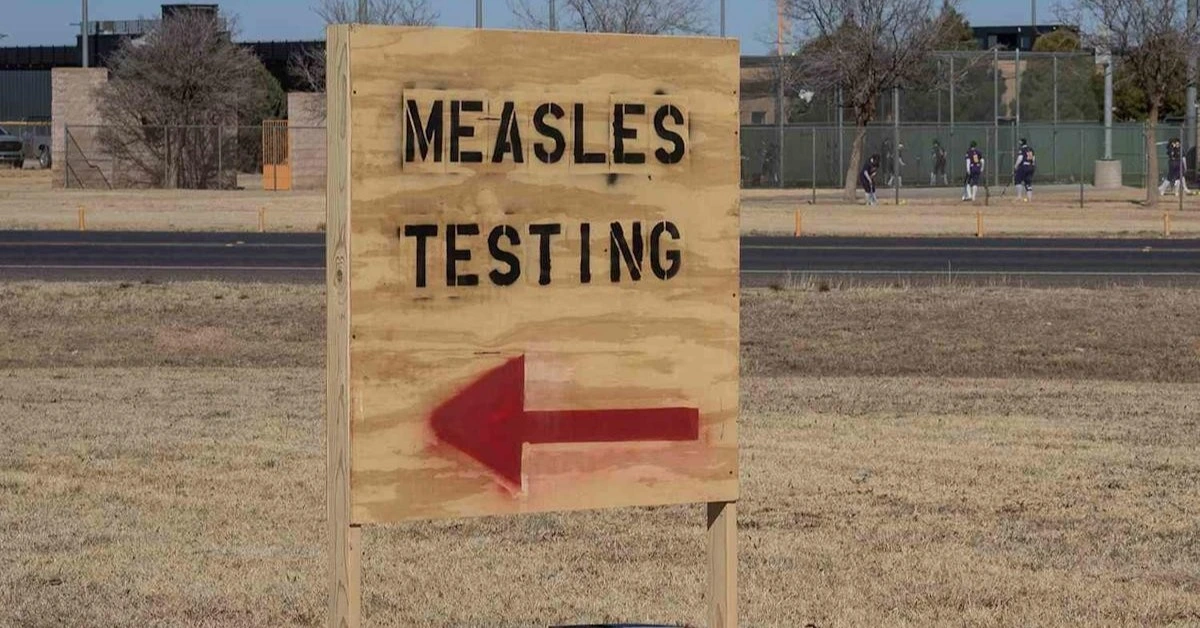
USA – As the United States grapples with a surge in measles cases, at least five states are now dealing with active outbreaks, the largest of which is in Texas.
As of late March 2025, Texas has reported 400 cases across 17 counties, with West Texas bearing the brunt of the outbreak.
This significant rise in cases has experts concerned, particularly as the U.S. has already surpassed the number of measles cases reported in all of 2024.
The U.S. Centers for Disease Control and Prevention (CDC) has indicated that the outbreaks are linked to international travel and spread to communities with lower vaccination rates.
Texas and New Mexico lead the way with high numbers
The Texas outbreak began two months ago and has seen rapid escalation. Since March, 73 new cases have been confirmed, bringing the total number of cases to 400.
Forty-one individuals have been hospitalized, and new counties, including Andrews and Midland, have been added to the list of affected areas.
Among the affected, a school-age child tragically died in late February, marking one of the two recent measles-related deaths.
Neighboring New Mexico has also been impacted, with 44 confirmed cases as of late March, primarily in Lea County, where two individuals have been hospitalized.
These cases have been genetically linked to the Texas outbreak. Additionally, New Mexico reported its first measles-related death in an adult on March 6, raising alarms across the region.
Outbreaks spread across other states
Other states, including Kansas, Oklahoma, and Ohio, are also dealing with smaller outbreaks. Kansas has reported 23 cases in six counties, with the first case appearing in Stevens County on March 13.
Oklahoma has confirmed nine cases, while Ohio reported 10 cases in Ashtabula County. These outbreaks are all believed to be connected to the spread from Texas and New Mexico, emphasizing the challenges of containing a highly contagious disease like measles.
In addition to these states, measles cases have been reported in other parts of the U.S., including Alaska, California, Florida, Georgia, Kentucky, and several others.
The CDC defines an outbreak as three or more related cases, and five such outbreaks have been officially recognized in 2025 so far.
The Global Connection: Mexico and the U.S. Outbreaks
The World Health Organization (WHO) has confirmed that the measles cases in Texas are linked to an outbreak in Mexico.
This international connection highlights the ease with which measles can cross borders, especially when vaccination coverage is not universal.
Vaccination rates and the need for a booster
The U.S. has struggled with declining vaccination rates in recent years, largely due to the pandemic and an increasing number of parents seeking vaccine exemptions.
The CDC recommends that children receive two doses of the measles, mumps, and rubella (MMR) vaccine: one between 12 and 15 months, and a second between 4 and 6 years old.
For adults who received their vaccinations long ago, a booster may be advisable, especially for those living in outbreak-prone areas or who are in contact with vulnerable individuals.
The U.S. once eliminated measles in 2000, but outbreaks have resurfaced in areas with low vaccination rates, underscoring the importance of herd immunity.
Measles can spread rapidly in communities where vaccination coverage falls below 95%, which is the threshold needed to protect the population from an outbreak.
Measles symptoms and complications
Measles begins with symptoms such as a high fever, cough, runny nose, and red, watery eyes. A characteristic rash usually appears a few days later, starting on the face and spreading downward.
The fever often spikes above 104°F (40o C) when the rash appears. While most children recover from measles, the virus can lead to serious complications like pneumonia, encephalitis (brain swelling), blindness, and, in some cases, death.
XRP HEALTHCARE L.L.C | License Number: 2312867.01 | Dubai | © Copyright 2025 | All Rights Reserved